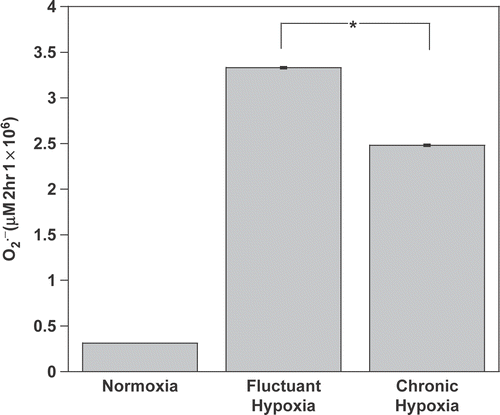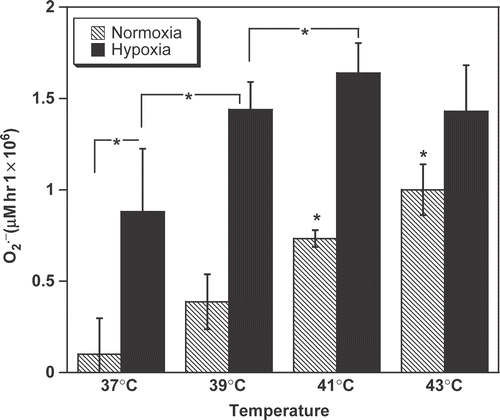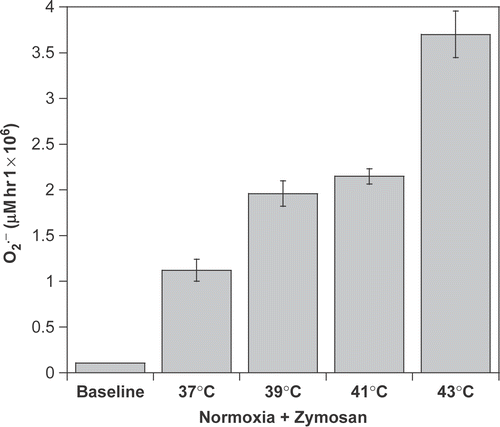Figures & data
Figure 1. Chronic and intermittent hypoxia stimulate oxidative activity of macrophages. production was determined from its ability to reduce cytochrome c. Non-activated macrophages were incubated for 2-h under normoxia (21% O2), chronic hypoxia (0.5% O2) or intermittent hypoxia (repeated cycles of 0.5–20% O2) at 37°C. *P < 0.05.

Figure 2. The combination of hypoxia and hyperthermia fully activates macrophage oxidative activity. production was determined from its ability to reduce cytochrome c. Non-activated macrophages were incubated for 1-h under normoxia (21% O2) or chronic hypoxia (0.5%). *P < 0.05.

Figure 3. Hyperthermia retains macrophage-activating capabilities in the presence of Zymosan. production was determined from its ability to reduce cytochrome c. Macrophages were incubated for 1-h under normoxia (21% O2) in the presence of 250 µg ml−1 of unopsonized Zymosan A.

Figure 4. Mild hyperthermia represses HIF-1α expression and activity in macrophages. Macrophages were cultured for 1-h (HIF-1α) or 8 h (VEGF) under different conditions of oxygenation and heat, as indicated, and readily fixed with 4% paraformaldehyde. Layers were stained for HIF-1α (a) and positively labelled cells counted. VEGF (b) was determined by ELISA. *P < 0.05.

